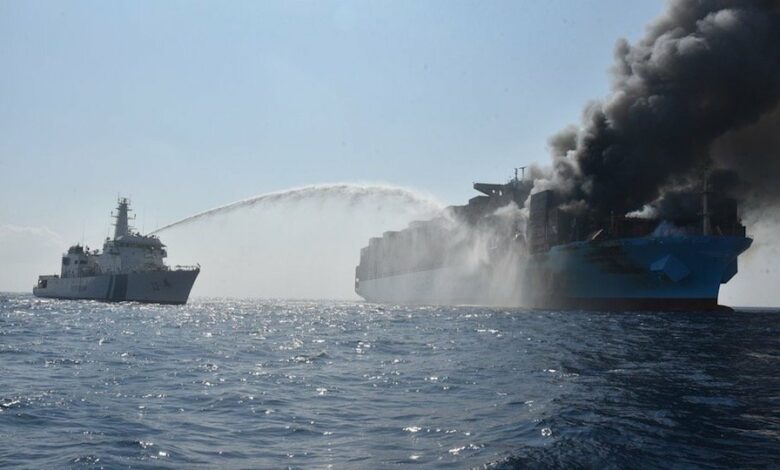Blockchain consortium sets out to tackle misdeclared cargo issue

Blockchain technology is being trialled to try and counter the alarming string of boxship fires started by misdeclared goods.
Maritime Blockchain Labs (MBL), founded by blockchain technology and governance experts BLOC and the Lloyd’s Register Foundation (LRF), today announced the establishment of a consortium to explore the use of blockchain in tackling the significant risks and challenges associated with the declaration and handling of dangerous goods.
According to the Cargo Incident Notification System (CINS), nearly 25% of all serious incidents onboard containerships were attributable to misdeclared cargo. In light of this, the consortium will explore the use of digital tools for traceability of dangerous goods cargo, and immutable attestations and digital audit trails for due diligence with a view to generating more transparency and accountability in tracking dangerous goods; ultimately, reducing incidents.
The MBL consortium will build and test a prototype to assess the potential for distributed ledger technology (DLT) to address the challenges faced by stakeholders throughout the supply chain. Funded by LRF and conducted in partnership with Rainmaking, the consortium includes Copenhagen Malmö Ports (CMP), Flexport, X-Press Feeders, SecureSystem, DSV, PSA, Port+, Agility and MTI. It represents stakeholders throughout the value chain, from ports, to carriers, to technology and service providers.
Deanna MacDonald, CEO and Founder of BLOC, commented: “The global economy is a highly interconnected machine, and with container ships transporting more than 90% of non-bulk cargo worldwide, this machine only operates efficiently when the shipping and logistics components operate efficiently. However, continuously tracking and monitoring the contents of seafaring containers is a supremely complex task that demands cooperation amongst stakeholders and a high level of data interoperability and information sharing. Blockchain has a huge amount of potential when it comes to tackling this – but we need to bring together stakeholders from across the value chain to ensure that whatever solution we build works for everyone involved. This is what this consortium is here to do.
“Shipping containers often carry little to no indication of their specific contents. At best, a product code is scanned, traced, and managed by siloed data systems, which rarely interoperate with data systems managed by other stakeholders along the connected value chain. This is compounded by weak enforcement, documentation complexity, lack of transparency around original and content of containers. It’s great to be part of a consortium that’s bringing such a wide range of expertise to bear on this problem.”
While the exact breakdown of cargo contents varies by container, it’s well known that at any given time, between 5-10% of an average container ship’s cargo is declared as hazardous goods and approximately 12% of global container trade comprises dangerous goods. However, it’s nearly impossible to know how much dangerous cargo is undeclared, or misdeclared.
The project will run until Septembe this year.
